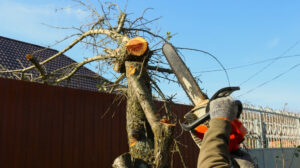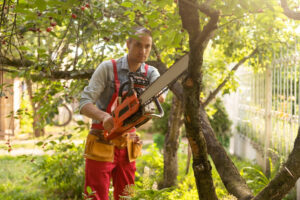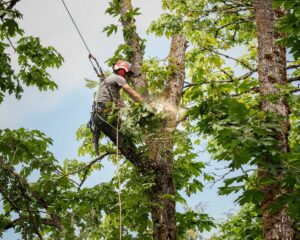The Importance of Trimming for Healthy Trees: How to Prevent Insect Infestations and Diseases
Trees, the silent guardians of our environment, provide us with oxygen, shade, and an overall sense of tranquility. However, to maintain their vitality and ensure their longevity, proper care and maintenance are essential. Among the various maintenance practices, tree trimming stands out as a cornerstone of tree care, offering benefits that extend far beyond mere aesthetics. In this comprehensive guide, we will delve into the significance of tree trimming, explore how it effectively prevents insect infestations and diseases, detail techniques for proper trimming, and highlight the myriad benefits it brings to both individual trees and the wider ecosystem.
Importance of Tree Trimming
Tree trimming is not a mundane chore; it is a critical aspect of tree management that promotes both the health and safety of trees. Untrimmed trees often develop dead, weak, or diseased branches, which pose significant risks to nearby property and individuals. These compromised branches are susceptible to breakage, especially during inclement weather, potentially causing property damage or personal injury. By regularly trimming trees, we eliminate these hazards, ensuring the safety of our surroundings and minimizing the risk of accidents.
Furthermore, proper trimming encourages healthy growth by removing competing branches, allowing the tree to allocate resources more efficiently. This promotes a balanced canopy structure and reduces the likelihood of branches becoming overcrowded or tangled, which can lead to structural instability. Additionally, trimming stimulates new growth by pruning away deadwood and promoting the development of strong, resilient branches. In essence, tree trimming is akin to a rejuvenating spa treatment for trees, invigorating them and enhancing their overall vitality.
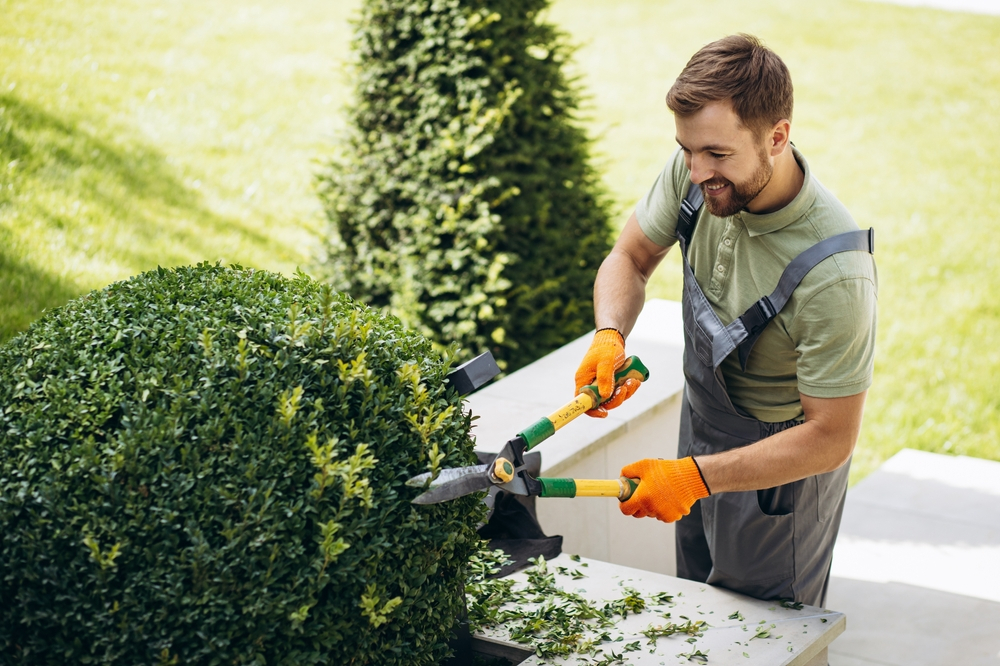
How Trimming Prevents Insect Infestations
Insects are among the most common threats to tree health, capable of wreaking havoc on even the sturdiest specimens. However, by implementing a proactive approach to tree care through regular trimming, we can effectively deter insect infestations and safeguard our trees. Insects are naturally drawn to weakened or damaged trees, which serve as ideal breeding grounds for their offspring. Dead or decaying branches provide ample food and shelter for these pests, allowing them to proliferate and spread throughout the tree.
By removing deadwood and diseased branches through trimming, we eliminate the primary habitat for insects, disrupting their life cycle and impeding their ability to establish a foothold. Furthermore, trimming enhances the tree’s natural defenses by promoting vigorous growth and strengthening its structural integrity. Healthy, well-maintained trees are inherently more resistant to insect attacks, as they possess the vitality to withstand the onslaught of pests. In essence, trimming serves as a preemptive strike against insect infestations, fortifying trees against potential threats.
How Trimming Prevents Diseases
In addition to warding off insect infestations, proper trimming plays a pivotal role in preventing tree diseases. Trees are susceptible to a myriad of pathogens, ranging from fungal infections to bacterial blights, which can quickly spread and devastate entire populations if left unchecked. Dead or diseased branches serve as entry points for these pathogens, providing them with easy access to the tree’s internal tissues. Once inside, these pathogens can proliferate rapidly, causing extensive damage and compromising the tree’s overall health.
By promptly removing infected branches through trimming, we not only halt the spread of disease but also mitigate its impact on the tree. This proactive approach minimizes the risk of secondary infections and prevents the disease from spreading to neighboring trees. Additionally, trimming promotes air circulation and sunlight penetration within the canopy, creating an environment that is less conducive to fungal growth and other diseases. In essence, trimming acts as a form of preventive medicine for trees, bolstering their immune systems and enhancing their resilience against disease.
Techniques for Proper Tree Trimming
When it comes to tree trimming company, employing the right techniques is paramount to ensure optimal results and minimize the risk of damage. Here are some key techniques to keep in mind:
- Selecting the Right Tools: Start by using clean, sharp pruning tools that are appropriate for the size and type of branches being trimmed. Dull or dirty tools can tear the tree’s bark, leading to unnecessary damage and increasing the risk of infection. Proper tools include hand pruners for small branches, loppers for thicker branches, and pruning saws for larger limbs.
- Identifying Branches for Removal: Before making any cuts, carefully assess the tree and identify the branches that need to be removed. Focus on dead, diseased, or damaged branches, as well as any crossing or rubbing branches that may cause problems in the future. Avoid removing more than 25% of the tree’s foliage in a single trimming session to prevent stress and promote healthy regrowth.
- Making Clean Cuts: When making cuts, aim for clean, precise cuts that promote rapid healing. Cut just outside the branch collar—the swollen area where the branch meets the trunk or larger branch—to facilitate proper sealing and reduce the risk of infection. Avoid leaving stubs or tearing the bark, as this can impede the tree’s ability to heal and increase the risk of disease.
- Following Natural Growth Patterns: Trim the tree in a way that preserves its natural shape and growth patterns. Avoid topping or excessively pruning the tree, as this can lead to weak, poorly attached branches and disrupt its natural form. Instead, focus on selective pruning to maintain a balanced canopy and encourage healthy growth.
- Timing the Trimming: Choose the right time of year to trim your trees to minimize stress and maximize the benefits of trimming. In general, it’s best to trim deciduous trees during their dormant season, which is typically late winter to early spring. This allows the tree to heal quickly and puts less stress on the tree’s resources. For evergreen trees, trimming can be done year-round, but it’s best to avoid trimming during periods of active growth.
By adhering to these techniques, you can ensure that your tree trimming efforts yield optimal results, promoting the health and longevity of your trees for years to come.
Summarize the benefits of regular tree trimming, including preventing insect infestations and diseases. Emphasize that this is not only beneficial for the individual tree but also for the surrounding environment. Healthy trees contribute to the overall beauty and functionality of the ecosystem.
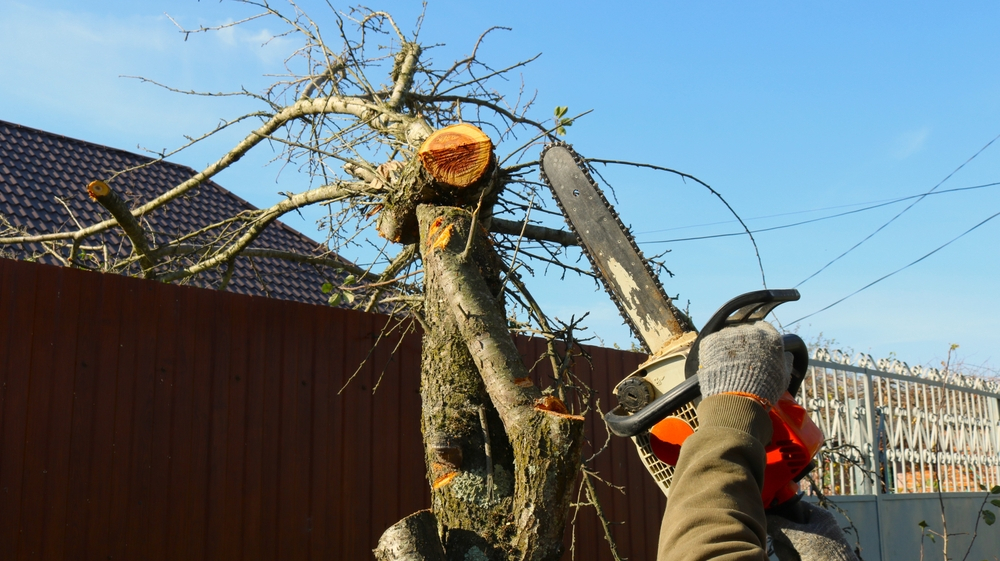
Conclusion
In conclusion, tree trimming is a cornerstone of responsible tree care that offers a multitude of benefits for both individual trees and the wider ecosystem. By proactively addressing issues such as insect infestations and diseases through regular trimming, we can preserve the health and vitality of our trees while enhancing their aesthetic appeal. Furthermore, proper trimming promotes safety by reducing the risk of branch failure and property damage, ensuring the well-being of both people and wildlife.
As stewards of the environment, it is our responsibility to prioritize the health and longevity of our trees through regular maintenance practices such as trimming. By investing time and effort into caring for our trees, we not only reap immediate benefits but also contribute to the sustainability and resilience of our natural landscapes for future generations to enjoy. Therefore, let us embrace the importance of tree trimming and commit to preserving the beauty and vitality of our trees for years to come.
Tree Trimming Richmond
(804) 533-3943
https://treetrimmingrichmond.com/

